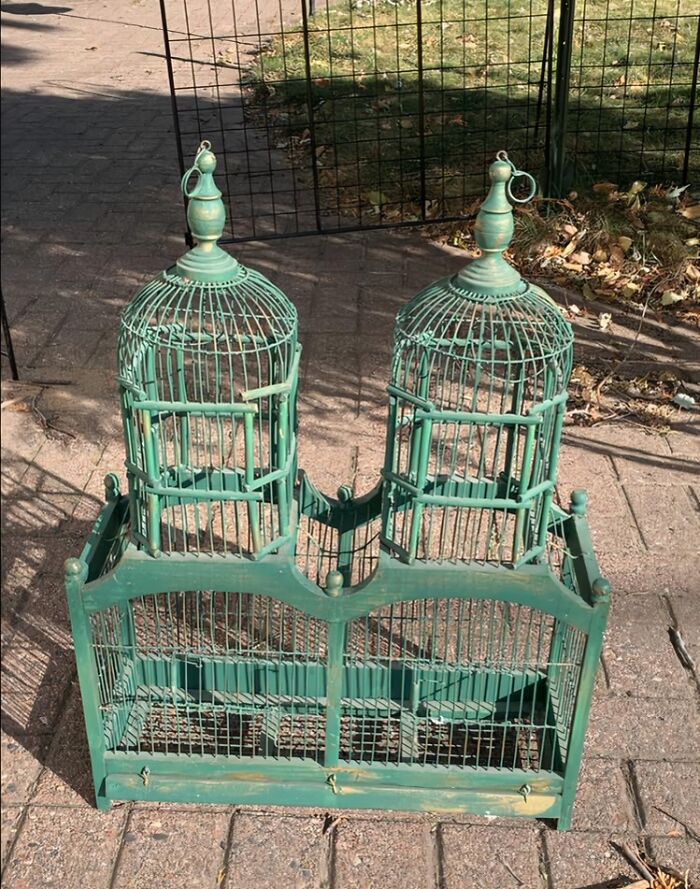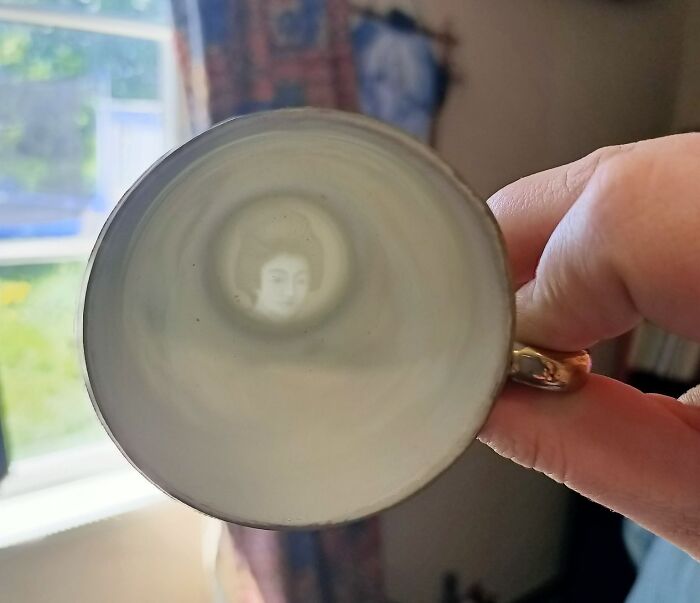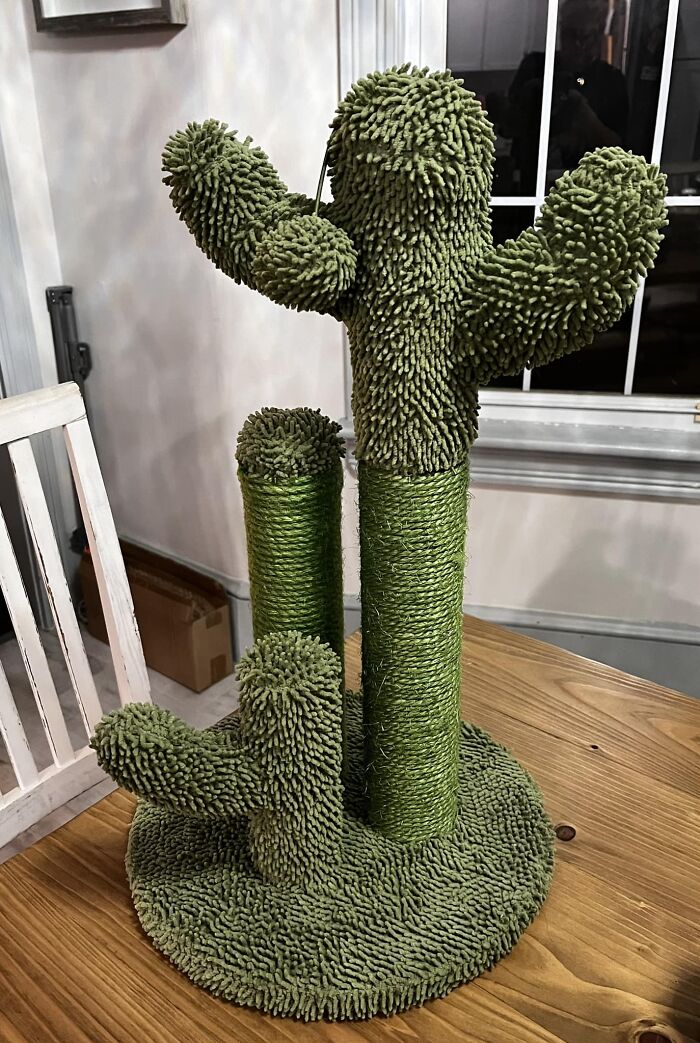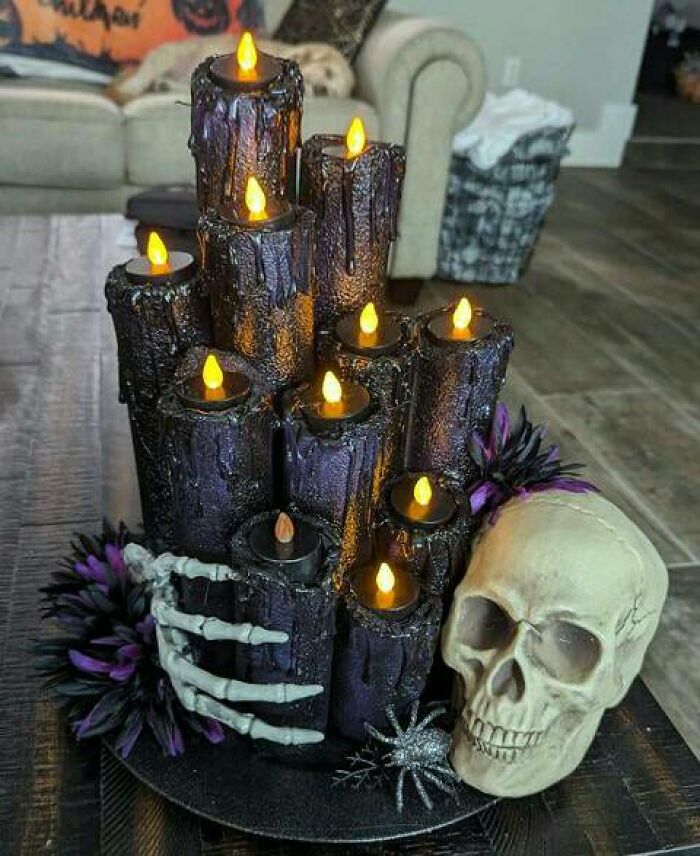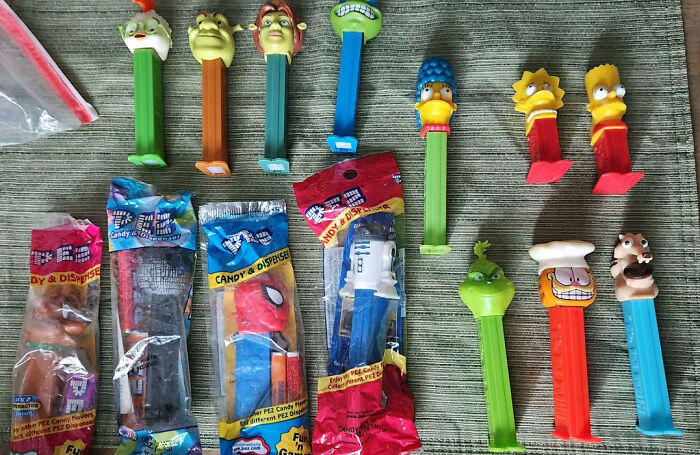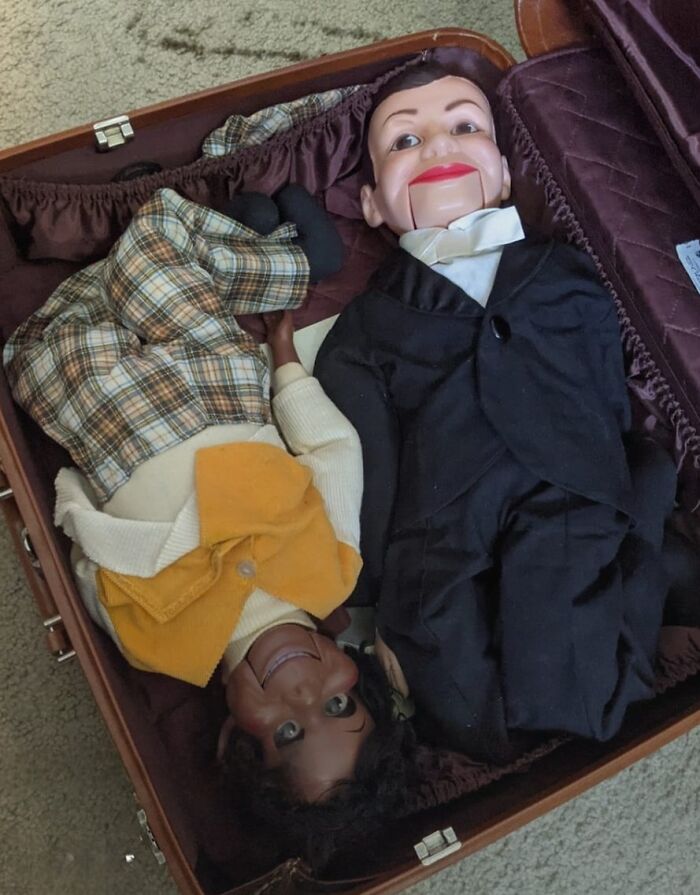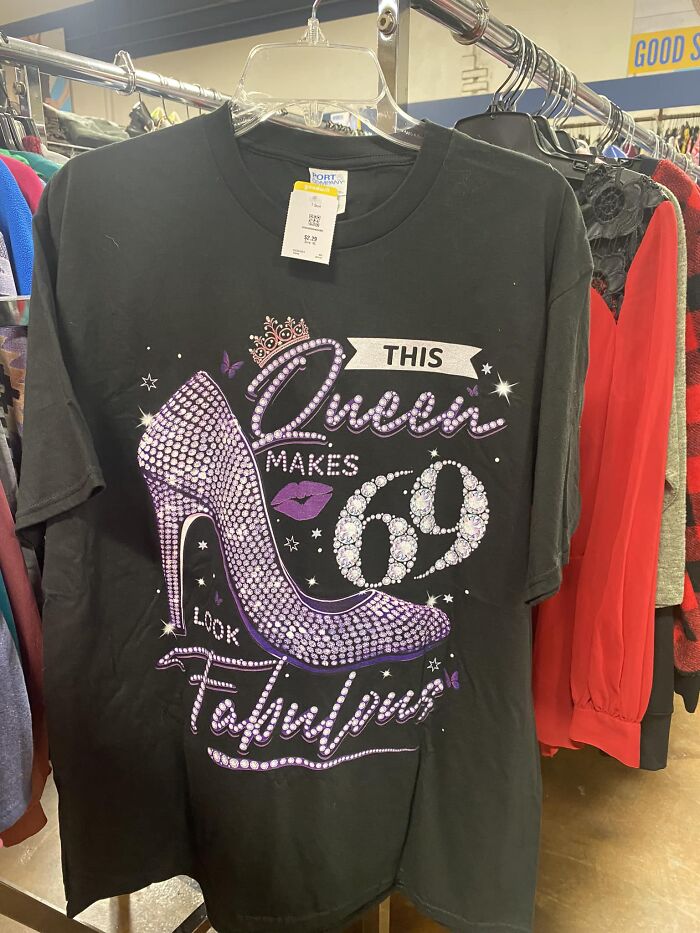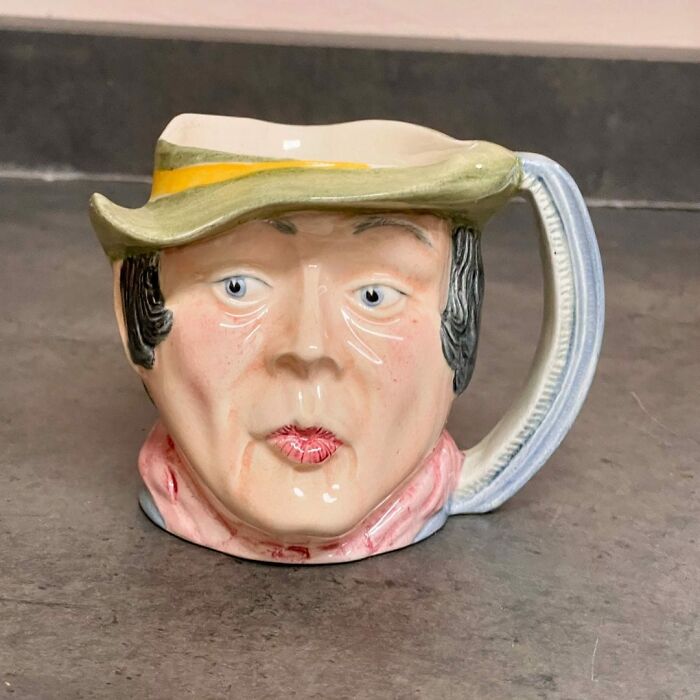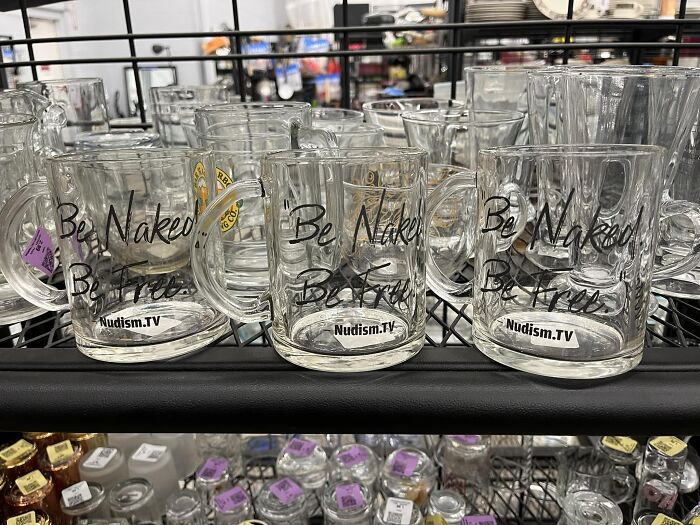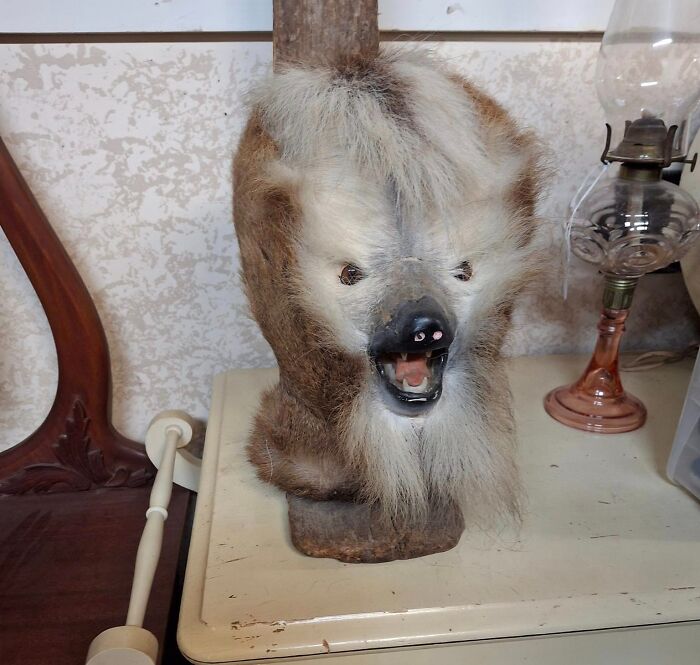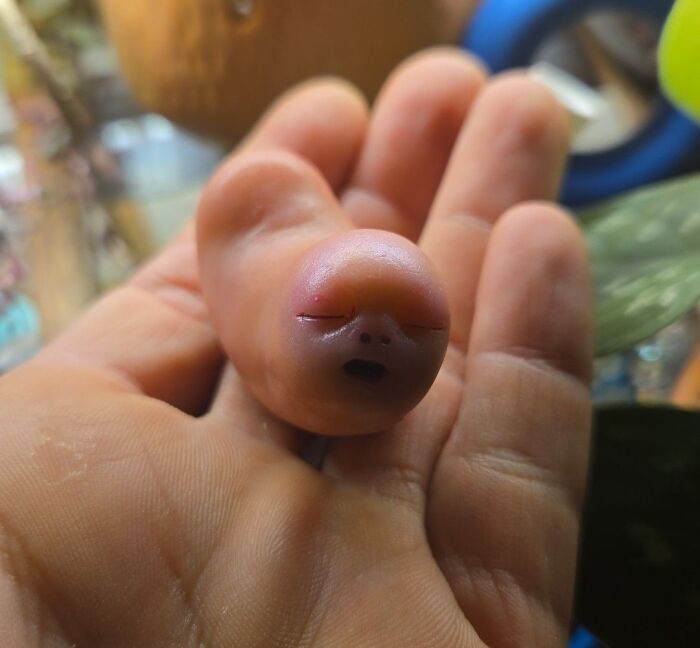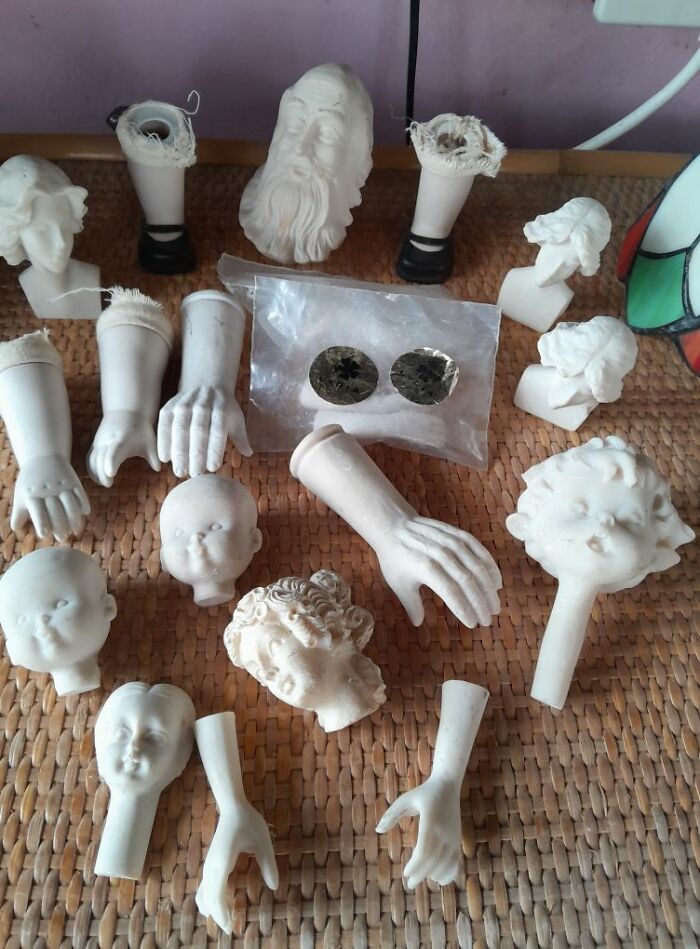Most avid thrifters would tell you that not every trip to the second-hand store results in amazing finds, like designer clothes or vintage items that could be a perfect addition to your home or closet. But that’s the art of thrifting—you have to be patient and persistent to be blessed by the thrift gods after rummaging through racks and shelves of hidden treasures.
People from the Facebook group Weird (and Wonderful) Secondhand Finds That Just Need To Be Shared probably know this all too well. With some savvy and luck, their long treasure hunts in thrift stores have majorly paid off in the most peculiar and incredible finds. Scroll down to see them for yourself, and don’t forget to upvote the ones you feel white envy for!
While you’re at it, make sure to check out a conversation with Liv Pearson, the founder of The2ndlook, a second-hand clothing store, and Sarah Smith, founder of Thrifthood, a second-hand adopt-a-bear experience and kids' clothing store, who kindly agreed to tell us how they got into the second-hand business and agreed to share a few thrifting tips with us.
This post may include affiliate links.
Found For Nearly $10k Elsewhere
Only $4.00! Hit The Jackpot
Liv Pearson, the founder of The2ndlook, a second-hand clothing store, says that she was exposed to the positives of second-hand thanks to her family, who comes from a tailoring background.
“After a career in luxury retail architecture design, I became concerned with the high consumption narrative being promoted and it definitely prompted a pivot in how I wanted to contribute to sustainability in my career. My creativity from design definitely helps me with the sourcing and presentation of pieces. It gives me a personal and unique edge to my business,” Liv shares.
A 24 Hr Analog Clock Found At A Yardsale, Didn’t Know It Existed
Sarah Smith, founder of Thrifthood, a sustainable adopt-a-bear experience and kids' clothing store, jokes that thrifting was coded in her blood. "My parents were thrifters and so was my Irish grandmother so I learnt how to thrift a bargain from a very young age!" she says.
But her love for thrifting really began in her late 20s, when she decided to face her consumption habits and stop buying fast fashion.
"My love for thrifting evolved into a business shortly after, following the birth of my brother’s second child. I saw how quickly my nephew outgrew all of his clothes and I knew my brother and sister-in-law were also keen thrifters.
So I got them a completely sustainable gift for my niece: I created a thrifted baby gift box including all secondhand baby items. I thought there must be people like me also looking for a sustainable gift for new parents and this is how Thrifthood began!" she fondly shares.
I Now Know What A House Hippo Is And Love Them Even More
Both second-hand business owners agree that patience is definitely required when second-hand shopping. “If you hold out for long enough, the right piece comes along for you,” Liv says.
Sarah admits that not every trip to the thrift store is successful. "My partner cannot understand why I keep going back when I can go into as many as 6 second-hand shops on one high street and come away with nothing. But that is kind of the point of thrifting: the aim is not to come away with something every time, it is to keep looking until you find the thing you actually need, or something that will make a great gift for someone else," she says.
Even though thrifting can be disheartening, she stays motivated to continue because she knows that there are absolute gems just waiting to be found. "Like a brand new Sézane cardigan for £8—my top thrift to date! But you have to be willing to do the work of the hunt to find pieces like this."
Omgoodness.,. Who Knew Being A Crazy Cat Lady Would Score Me This
While thrifting can be a more sustainable and cheaper option than buying new, people should still be cautious of what they’re buying so they don’t contribute to unnecessary consumption. Liv recommends looking at the garment’s fabric composition and interior to gauge if it’s worth investing in.
“Choosing pieces that have a higher natural fiber content, e.g., wool, linen, cotton, etc., and checking if their interiors have been thoughtfully resolved with either linings or appropriate stitching—these tend to be good green flags to look out for.”
Meanwhile, Sarah follows the "if it’s not a hell yes, then it’s a no" rule. "If it’s not on your thrift list or you don’t go "Hell yes!" when you try it on (or know someone close to you who would LOVE it), then you shouldn’t buy it," she says.
"I also suggest looking at the fabric composition of the item, even if you love it when you try it on, so you can consider if you will actually enjoy wearing the item day to day. I try to avoid synthetic materials because they make me hot and uncomfortable, and my most worn items in my wardrobe are items made of 100% cotton," she adds.
Thrilled With My Double Tower Bird House Find
Purchased This Lovely Thrifted Bathroom Decor Today
My Find At A Market
I found Limoges Bernardaud tea porcelain cups and saucer for 2€ each. Gilded with gold. It costs more than 150€ each.
One of Liv’s top tips for bringing back older items to their former glory is investing in a good-quality steamer. “I recommend looking into a professional model, as they last for several years and can easily be repaired with Rex placement parts. They very quickly brighten up items. They’re a great tool for also using on soft home furnishings.”
Sarah also suggests using fabric dye—her newest discovery. "I have lots of items that I still love (particularly white pieces) that have stains that will not come out or have just become too discoloured. By dyeing them a darker colour (which is so easy to do, you just put the pod in the washing machine) not only do I restore the items, it’s like creating a completely new item for your wardrobe."
I Wish I Had That Cup
My Absolute Favourite Thrift Score Of All Time
It’s Soooo Stinking Cute, I Couldn’t Leave It
At this point, it’s undeniable that second-hand shopping has gained massive attraction and Britons seem to have the biggest share in it. A whopping 61% of citizens in the UK have bought an item from a thrift store in the past year.
One Of My Favorite Mugs! Because Nobody’s Perfect! LOL
I Got Him!
Got This Today At My Local Thrift For $6.00
In 2023, the average Brit’s wardrobe was made up of 23% pre-loved clothes. The figure increased to 34% among those aged 18 and 34. Last year, they generally bought three secondhand clothing pieces, with young adults purchasing 5.3 and older people 1.7 items.
Almost Full Set Of Duck Cups, Duck Measuring Cups
This Maybe The Best $1.50 I've Ever Spent
Frida Catlo Came Home With Me Today
The most purchased types of clothing were shirts (57%), jackets (39%), and pants (37%). If you wonder what pieces are worth buying, those who scored a good bargain mostly bought accessories (29%) and shoes (26%).
Parents too willingly purchase second-hand items for their children. Around 59% of them have bought at least one garment for their kids in the last year.
T-Shirt From 2nd Hand Store That Came Home With Me
I Am Thinking About Planting Succulents In It
Even though online shopping prevails when people purchase new items, offline shopping still remains a favorable way for people to shop second-hand. 43% of people who browse for pre-loved things prefer to do so in-store and 39% online.
I Found These Coupons In The Back Of A Recipe Book From 1994. They Say No Expiration Date So I’m Going To Try To Use Them
We've had some people bring these in over the years and our managers did not honor them as they were not scannable.
I Bought This Beautiful Old Metal Original Ford Gum Machine At The Local Car Boot In Tenerife For Only 5 Euros
That Would Be A Hard Pass For Me
The primary reason why people (36%) opt to buy secondhand is cost-effectiveness. 16% choose to thrift because they worry about the climate and want to counteract fast fashion. Meanwhile, 9% preferred the quality and style of pre-loved clothes, and 8% believed that it was “cool.” Thanks to all the environmentally cautious people, the secondhand industry has grown to $376.48 billion in 2023.
Octopus Are My Favourite Animals So I Couldn't Say No
One Of My Best ❤ Hand Crafts
Found, And Purchased, At A Local Church Rummage. Yes, You Read That Right… A Church
Who Wouldn't Want A Slush Puppy Lamp
All The Foot Pain Can Be Yours If You Head To Upscale Thrift In Folsom, Ca
None Made The Cut To Come Home With Me, But I Was Entertained
Found This Totally Awesome Watermelon Bag. I Love It
Oh, don't y'all just hate it when you can't fit anything in your handbag...
I Love It, But I Had To Leave It As I Wouldn't Have Been Able To Take It Home On The Train
I need everything in that window. And yes I did take a 6' carving of a giraffe on the bus once, who wouldn't.
The Wife's Newest Creations
Found A New House Hippo
Meet Hagatha, My House Hippo
Yup. Best 50 Ever Spent. Now We Just Have To Figure Out Where To Put It All
I Shrieked With Joy When I Spotted This
I'm So Excited! I've Wanted One Of These Vintage Lady Heads For A Long Time
Oh, so you wanting a vintage lady head is okay, but I keep one in my fridge for just one week and people are asking me to move out. Unfair
Today's Thrift Store Find Came Home With Me In Hopes To Preserve This Family's Records Or Send To Someone Within This Family
Got This Waterford Crystal Diamond Clock For 3.99 At Thrift Store
Funeral Removal Basket
"Americans adopted some interesting customs surrounding death in the Victorian period (1837-1901). Mortality rates were much higher than we are accustomed to now, especially for infants and children. So death was a regular part of life, so to speak. Death was also very personal for Victorians. The body of the deceased was usually laid out in the parlor of house, often in a casket like this one. This wicker example was used only temporarily for the funeral and viewing of the body, held at home. The deceased was not buried in it; wicker caskets such as this one were used over and over. These caskets were also known as transfer baskets, used to transport the bodies of those who died while away from home. Practically speaking, they were more lightweight and easier to carry than a coffin made of wood."
Found These At A Yardsale Earlier For 3 Bucks
My Mom Collected All Sorts Of Things, And We Found This In Her Collection
Yard Sale Find. My Grandson Had To Have It, He's 2. LOL
Found This Little Guy A Couple Years Ago In Alabama
I Didn’t Buy This Record
Halloween Day Find
Just An Upset Pineapple Salt Shaker, Missing It’s Mate
I Met This Little Geisha Lady At A Hope's Closet Resale Store About 3 Months Ago
My Mom Has Been Collecting Jesus Paintings For Quite A While. All Of These Paintings Were Found At Different Goodwills
Another Though I Find Them Creepy From My Brother In Laws Estate
Needless To Say The Cashiers Were Freaking Out
Found This Weird Little Shadow Box
I Looked It Up And Found Out That In The Box It Is Worth $800. I Decided I Keep It
This (Quite Large) Chameleon Candle
Found And Bought From Goodwill Today
I Found This Amazing Frida Kahlo Mug Today At The Goodwill For $5
I’m Wondering If I Should Take The Time To Read It
I read that, took me ags to get through it. Not very good, plot was thin and there was no climax in the end
Peanut Man Peanut Dispenser
Cat Clothing Hanger Which Definitely Came Home With Me
Measures 18” And Will Probably Murder Me In My Sleep
A Very Chubby, Colorful Piggy-Bank. This Is Going To Make Saving Coins So Fun
Creepest Thing Ive Ever Found ...... Yea So I Kept It LOL
I vaguely remember making something similar to this when I was a kid. Except mine was a lot smaller, I think I used a baby food jar.
On Marketplace…..is It Just Me???
Obsessed With Today's Pick Up
No Wonder It Was Donated
Not Weird But Wonderful Thrifting Find
I've Wanted One Of These Vintage Man Heads For A Long Time
Be Naked, Be Free
My Favorite Find Of The Day
Found This Guy The Other Day
St TIL Saint Onophrius was a hermit in 4th century Egypt. Long beard, loincloth made from plants.
Check Out This Cool Doll
This Pig Didn’t Fly Today. I Left Her Behind
Cursed Find At The Antique Mall
My Heart Stopped When I Saw Her
Saw This Cutie At An Estate Sale This Morning
These Are In Fact Second Hand..my Fiance Was Blocked For Posting His Tiny Potato Beans
Was He Really A Good Boy Or Is It Just A Stocking Of Lies
Bought At The Thrift Store For 1.99 My Kids Are Super Creeped Out By It
My Moocat Isn’t Sure What To Think
I Got This Bear At Goodwill And I Love It
"Jesus Is My Coach"
So This Is A Coin Bank Without A Slit On Top? Cool But Not
These Are The Most Weird Things I've Ever Bought But I Was Drawn To Them, The 2 Packets Have Hands In Them And A Sticker Saying Lydia
Someone Had This Massive Canvas Painting In Their Garbage. It's 6 Ft Tall
How Cool Is This
Not Sure What This Is ... But I'm Keeping It
Not Sure How Weird This Little Toby Jug/Mug Is
Mr Pickwick from Pickwick Papers by Charles Dickens - I think.
Is This Who I Think It Is
Curious Whether Anyone Has The Same Reaction I Had When I Saw This
That's a sculpture of a Norman Rockwell painting! I have a plate with the painting on it.

 Dark Mode
Dark Mode 

 No fees, cancel anytime
No fees, cancel anytime 














